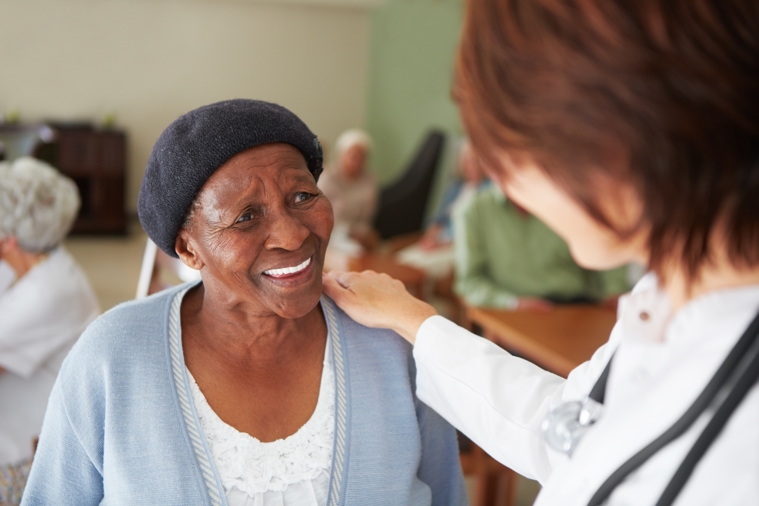When it comes to stroke, think ‘F.A.S.T.’
May 15, 2019

More than a decade ago there was little caretakers could do medically to save stroke victims. I remember a time when people would come into the emergency department with a stroke, and we would pray with them and say we’re sorry. Today, thanks to increased education on early recognition and advanced treatment options, I continue to see more and more people walk out of the hospital with limited to no disability.
During National Stroke Awareness Month, it’s gratifying to recognize how much stroke research and treatment have advanced in the last 10 years – but there’s one thing that hasn’t changed: the longer a stroke goes untreated, the worse the outcome.
Stroke – which occurs when a clot blocks the blood supply to the brain – is the fifth leading cause of death in the United States, killing about 140,000 people each year, according to the U.S. Centers for Disease Control and Prevention. What many don’t realize is that it’s also a leading cause of long-term disability, reducing mobility in more than half of stroke survivors older than 65.
That’s why it’s so imperative for those experiencing stroke symptoms to immediately call 9-1-1 and be transported to the nearest hospital for treatment. Do NOT drive yourself to a medical facility. First responders are trained to recognize stroke, and trigger a pre-notification system for the hospital they’re transporting you to so that staff there can prepare for your arrival. That’s critical during a stroke, when minutes matter. Every minute of a stroke kills about 2 million brain cells. It’s why we say that “time is brain.”
At Adventist Health Tehachapi Valley, we’re prepared to deliver the first tier of treatment for a stroke, including running diagnostics and delivering the clot-busting drug Alteplase. If you require more extensive treatment, we can provide a quick, seamless transition to our certified stroke center at Adventist Health Bakersfield.
Of course, the best way to avoid all of this is by controlling your risk factors for stroke.
Some factors are out of our control, like age, genetics and family history, but others can be controlled.
Limit alcohol intake; reduce your blood pressure if it’s high; keep your cholesterol down; stop smoking cigarettes or other illicit drugs; and talk with your physician about a moderate exercise regimen. If you have diabetes, work with your doctor to get it under control.
All of these risk factors can be easily modified with a little bit of effort, and working to control them could save your life.
Alida Lorenz is director of nursing at Adventist Health Tehachapi Valley, and a stroke certified registered nurse with a background in neurocritical care who has opened multiple stroke programs at hospitals throughout the state.
Stroke Signs
Recognizing stroke symptoms is critical when it comes to getting treatment quickly. Symptoms often come on suddenly, and can be remembered by the acronym, “BE FAST.”
B – Balance: Sudden unexplained loss of balance
E – Eyes: Sudden blurred vision
F – Face: Sudden Facial Droop- The face often begins to droop to one side.
A – Arms: Sudden arm drift- Arms sometimes fall to one side.
S – Speech: Sudden trouble speaking or slurred speech.
T – Time: Time to call 9-1-1 if the above symptoms are observed.
By: Alida Lorenz, RN, MSN, SCRN


